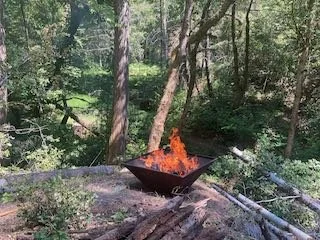Biodiversity for a Livable Climate hosts a paid webinar series this month, starting today with Brock Dolman of OAEC on how water governs our climate.
“We’ve already passed 1.5°C of warming. We’re beyond the safety zone. Now, we must not only prevent further heating—but also start cooling the planet using fast, affordable strategies that are proven to work!”—excerpt from announcement
They make the point that water, not just carbon, governs the planet’s temperatures. Deforestation, pavement, and soil degradation diminish the natural air conditioning provided by forests, grasslands, wetlands, and oceans. The webinar plans to offer simple, affordable techniques already working around the world.
The announcement made me think immediately of biochar. One of the “simple, affordable techniques” presented in the webinar is bound to be biochar. It cools the planet not just by sequestering carbon, but also by increasing soil water retention and availability to plants so that they, in turn, not only sequester more carbon but cool the air through evapotranspiration. Biochar belongs in the toolbox for restoring planetary hydrological cycles. (It doesn’t appear in the announcement, but the presenters are permaculture teachers who know about biochar.)
So the biochar that we put in the soil does more to cool the planet than just sequester carbon—it draws down water as well, which replenishes broken hydrological cycles, which restores natural air conditioning. This is a great point, and it’s going to be included in my biochar presentations from now on.
Incidentally, when we increase soil carbon with biochar, we indirectly increase photosynthesis by promoting vegetation, which cools the planet even more. “Photosynthesis provides active cooling by turning UV into chemical energy and biomass instead of heat as well as through evapotranspiration cooling and shading,” says Ethan Young. “These are powerful modulators of microclimate that scale to impact macroclimate (eg why urbanized and other desertified areas are heat islands).”
Making biochar from excess forest material, instead of chipping or incinerating it, turns a “waste” into a benefit. Removing this excess is the first step in returning healthy fire to western North America, where our misguided policy of complete fire suppression has predictably backlashed. We might as well make biochar out of it, so that we don’t just send the carbon back to the atmosphere. But while we do, let’s celebrate the fact that we’re not just fighting fire with fire—we’re also cooling with it.
